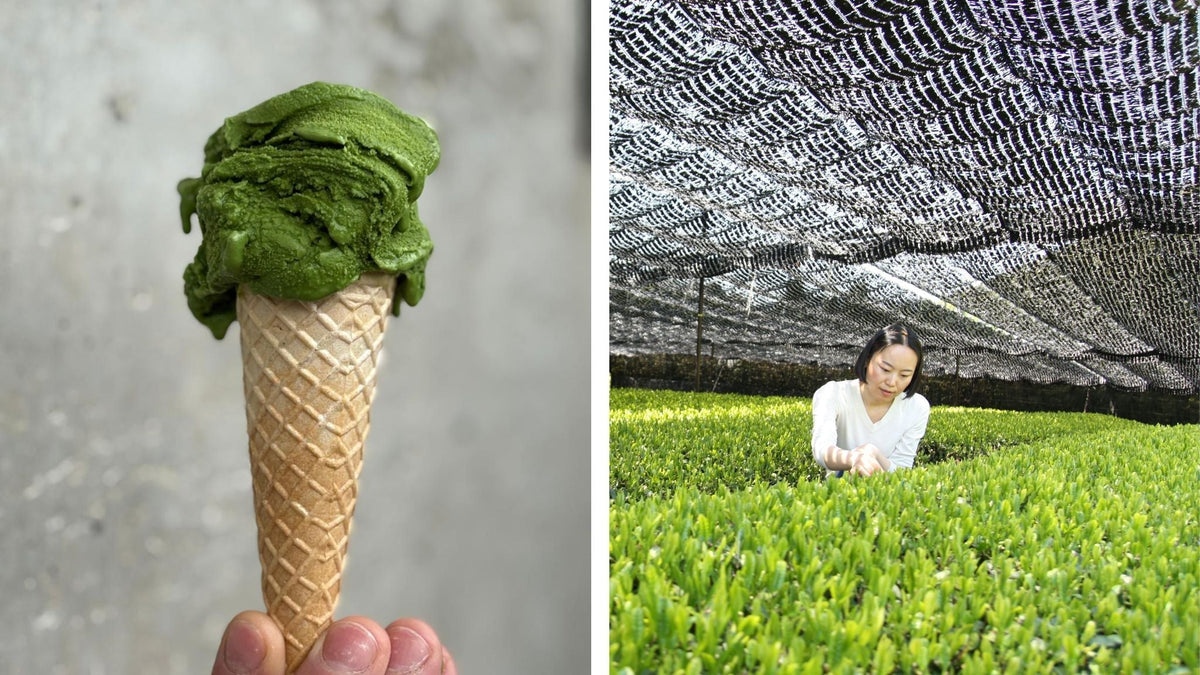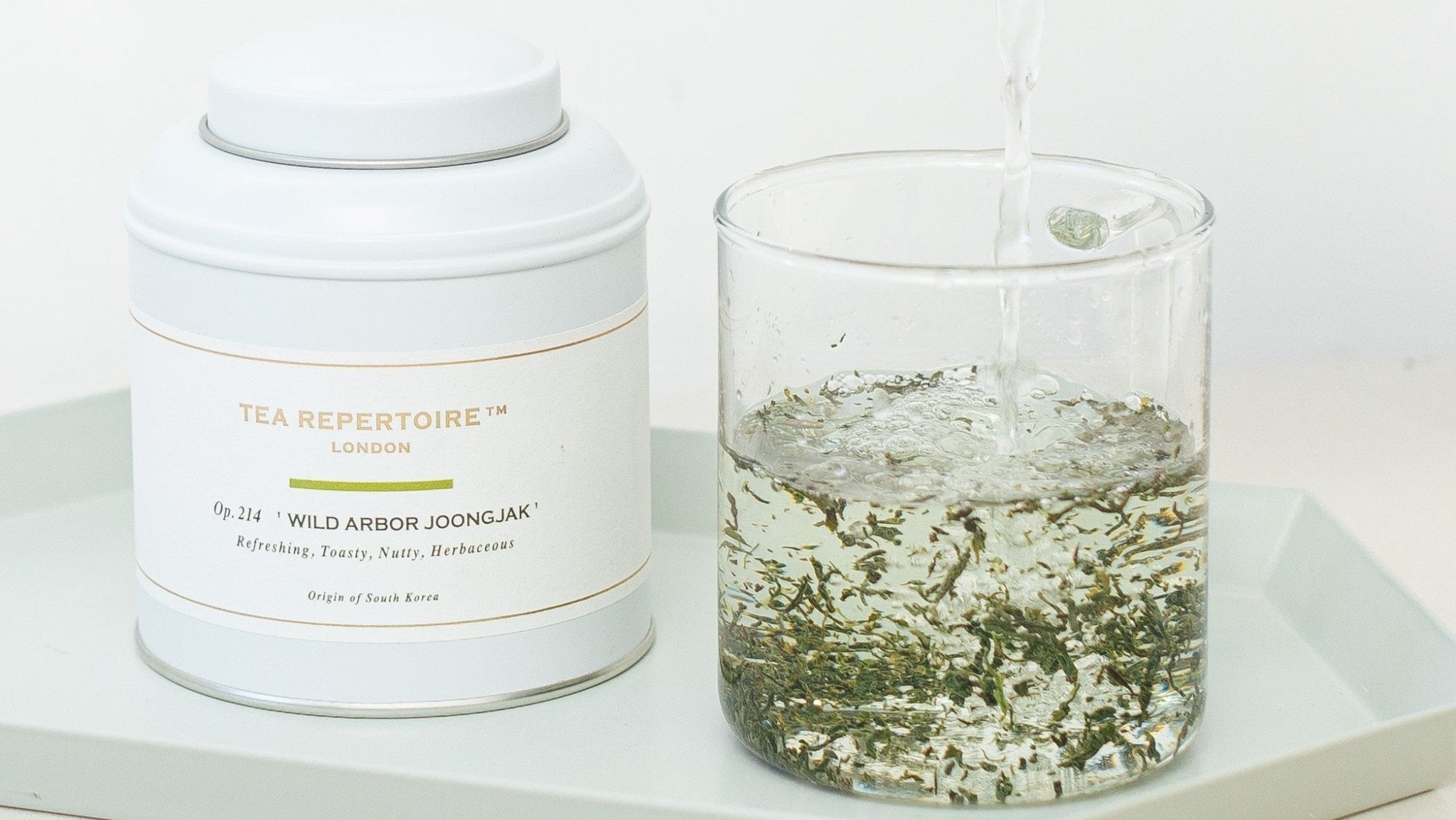South Korea Rare Artisan Tea
South Korea, known for K-Pop and global conglomerate companies such as Samsung and Hyundai, lush green tea fields might not be the first image that comes across your mind when you think of South Korea. However, if you enjoy green tea, you might well find your new favourite one from South Korea.
The history of Tea Plantation in Korea
Hadong and Jiri Mountain area are where oldest wild tea bushes are grown and its tea history dates back to the 9th century. Boseong was also listed as a tea growing region during Joseon Dynasty, but its mass tea plantations were developed during the Japanese colonisation in 1930, while the tea plantations in Jeju Island started developing in 1970s. While big scale tea gardens located in Boseong and Jeju Island produce industrialised, mechanised green teas, small family-run tea gardens around Hadong area continue to produce top quality, traditional, hand-made green teas and Balhyocha from wild tea bushes naturally grown in the region. While you may often encounter Korean green teas from Jeju Island abroad, authentic, hand-picked and hand-made, wild bush green tea from Hadong is not easily available in the markets outside South Korea due to limited production.
Our Sejak Tendresse offers a rare opportunity to green tea connoisseurs to try real, authentic, entirely hand-made Sejak green tea from South Korea.
How is Korean green tea made?
Longstanding Chinese cultural influence in the Korean history and 36 years of Japanese colonisation of Korea in the early 20th century have influenced the tea culture and modern tea industry in South Korea, hence resulting in the co-existence of steamed and pan-fired green tea production in the country. Therefore, no matter if your taste buds have developed a craving for the toasty, nutty sweetness of Long Jing or the rich, umami, vegetal flavour of Japanese Sencha, you'll be able to find a green tea that please your palate in South Korea.
As both pan-firing and steaming green tea making methods exist, fussy green tea lovers would normally ask if the green tea is “Deoukkumcha” (pan-fired green tea) or “Jeungjecha” (steamed green tea), as Woojeon, Sejak, Joongjak and Daejak all can be either made into steamed or pan-fired green tea, depending on the provenance of green tea and the scale of the tea farm.
Where are the tea growing regions in South Korea?
In South Korea, there are three main tea producing regions - Boseong, Hadong and Jeju Island. Usually, green teas from Hadong and Jiri Mountain area, which is known as the birthplace of Korean tea and hosts small-holding family tea farms, are made by employing the traditional Chinese-influenced, pan-firing method, whereas more recently developed bigger scale tea farms in Boseong and Jeju Island produce both Japanese-influenced, Sencha-style, steamed green tea as well as pan-fired green tea, because steamed green tea production requires a bigger scale farming than pan-firing green tea production. For instance, minimum 50 Kg crops of tea leaves are usually required to run one steamed green tea production, hence, steamed green tea production is not always a viable production option for small-holding tea farmers whose daily tea crop during the harvest season is much less than 50Kg.


Green Tea Grading System in Korea
Korean Tea grade is generally classified by the season tea is plucked - Woojeon (First Flush), Sejak (Second Flush), Joongjak (Third Flush) and Daejak (Fourth Flush). Woojeon, literally meaning, "Before Rain" is made from hand-picked tiny buds and leaves before the first spring rain around the 20th April (the date known as "Gokwoo" in the lunar calendar). Sejak is also made from tender buds and leaves harvested for two weeks after "Gokwoo". Woojeon and Sejak are mostly made from hand-picked leaves, although bigger scale tea farms in Jeju Island may offer machine harvested and machine-made Woojeon and Sejak. Joongjak is made from more opened leaves which are harvested for 2 weeks after the 5th May (the date known as "Ipha" in the lunar calendar, meaning “the entrance to summer”). As the leaves are more mature, there is a more pronounced grassy note in Joongjak. Finally, Daejak is made from large open leaves harvested throughout the summer. It is almost all machine harvested, may include stems and branches and is usually noticeably more astringent than the others.
How Should Well-made, Artisan Korean Green Tea Taste?
In terms of flavour, depending on the tea cultivar and production method employed for the production, Korean green tea can be on the more nutty, toasty end or on the more umami, vegetal end of the green tea flavour spectrum. In the regions such as Boseong and Jeju Island where Yabukita cultivar is widely cultivated, Jeungjecha style green tea can taste very much similar to gentle, umami Sencha with a noticeable, refreshing pine tree note in the finish. In Hadong where wild native tea varieties are used for green tea production, there is often a distinctive zingy, fruity sweetness in the finish, regardless of its main flavour being dominantly on the toasty or vegetal side.
Does South Korea only produce green tea?
There is a variety of tea types produced in South Korea besides green tea (aka. Nokcha in Korean) - for example, black tea (aka. Hongcha), semi-oxidised black tea (aka. Balhyocha), fermented tea (aka. Tteokcha), matcha (aka. Malcha), genmaicha (aka. Hyunmicha). However, the vast majority of the tea produced in Korea is green tea.
What is Balhyocha?
Balhyocha is a challenging category to define, as it is not a fully oxidised tea, with its oxidation level varying between 70-80%. Hence, it falls into the category of oolong tea in terms of oxidation level. Nonetheless, it doesn't go through the bruising process, a critical step to create desirable flavour profiles in oolong tea production. Some farmers even age Balhyocha for decades. A well-aged Balhyocha offers a superb, smooth, rounded liquor with woody and sweet raisin flavour, evocative of aged rum.
Ending Notes
If you’re planning a trip to South Korea, don’t just limit your stay in the metropolitan Seoul, but try to make your cultural trip more interesting and authentic by visiting one of the tea growing regions in South Korea. Hadong, Boseong and Jeju Island all offer an incredibly beautiful, peaceful and soothing scenery, which is perfect to completely unwind yourself and relax. In addition, you will be able to bring your new favourite green tea back home from kind, warm-hearted and generous tea farmers you will meet during your journey.
Thank you for reading our journal, if you are curious about Korean Tea, visit the page Buy Korean Tea >>.

A photo taken during the visit to our tea garden on the slope of Jiri Mountain, Hadong, South Korea
Leave a comment
Comments will be approved before showing up.
Also in TEA JOURNAL

A Cool Collaboration – Tea Repertoire x Labo Gelateria
Tea Repertoire teams up with Labo Gelateria to present two limited-edition ice creams crafted with authentic Japanese matcha. A gourmet experience not to miss this summer in Geneva.

Tea Repertoire, World of Coffee Geneva 2025, specialty coffee & tea
Join Tea Repertoire at World of Coffee Geneva 2025, booth 1131, for premium tea tastings, café blends, and global beverage inspiration.


